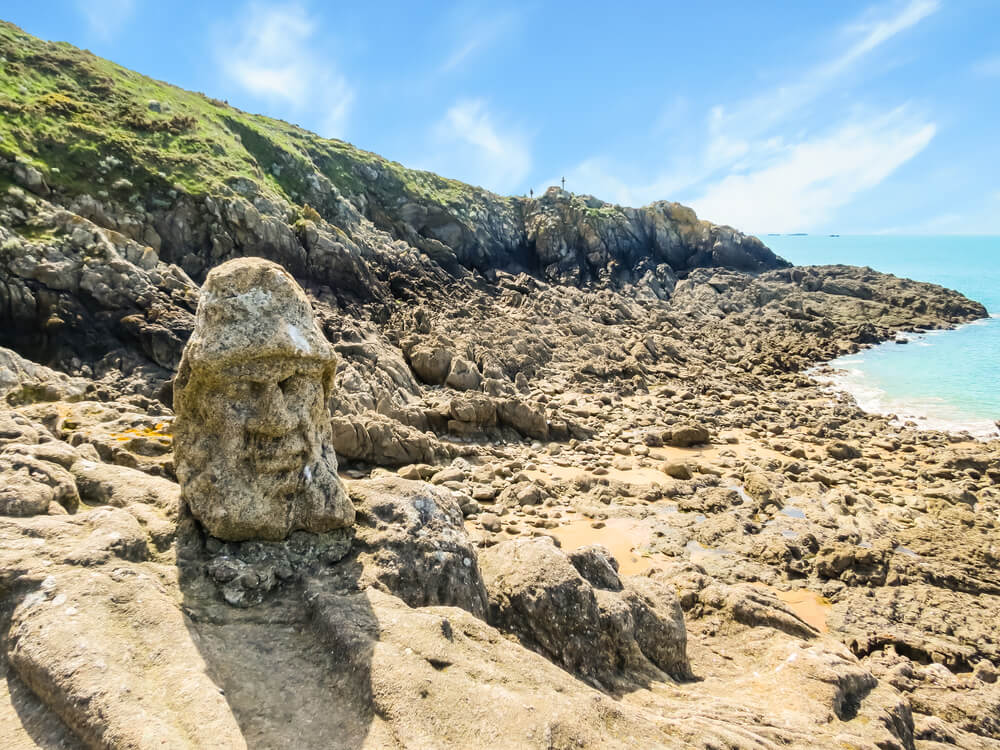Discover the Sculpted Rocks of Rothéneuf

When visiting Saint-Malo, it would be a real shame not to pay a visit to the amazing Rochers Sculptés de Rothéneuf!
A real attraction for young and old alike, you’ll be amazed to discover these faces carved into the rock over an area of more than 500 m2. This piece of art brut is one of the most famous in Brittany.
What is this fresco of sculpted rock made of?
The immense granite fresco reveals faces, silhouettes, bas-reliefs, monuments and statues.
More than 300 figures linked to the news of the time, famous personalities, but also characters from Breton legends and local saints. Among the most famous, you might spot the famous Breton explorer Jacques Cartier or Saint-Budoc, a saint well known to the Bretons.
Once coloured with lime and tar, time has gradually erased these splashes of colour. The tides and the erosion of the rocks have done little to preserve them, as have the footsteps of careless visitors.
Who sculpted the Rochers de Rothéneuf?
Abbé Fouré (Adolphe Julien Fouéré 1839-1910) is the creator of these sculptures. A native of the region, he moved to Rothéneuf in 1894 following a stroke that left him deaf and dumb, leaving him no choice but to give up his ministry.
A man of faith and will, he embarked on this new quest armed only with a hammer and chisel, and at the already advanced age of 54. It took him no less than 14 years to achieve this result, until paralysis forced him to stop in 1907. He died 3 years later.
Deprived of speech and plunged into a world of silence, sculpture had become his only means of expression in the face of his disability. In spite of himself, the “Hermit of Rothéneuf” became an attraction for tourists to the seaside resorts of Saint-Malo and Dinard, as well as for the locals.
The legend of Rothéneuf, a family of shipwreckers from Saint-Malo
Abbé Fouré wanted to immortalise this legend, which is said to have taken place in the 16th century. The Rothéneuf family lived near the tip of the Emerald Coast. Hunting, fishing, stealing and smuggling would have been part of their daily lives. They used fast ships to catch up with vessels in the open sea and steal from them.
We don’t know whether they were privateers or pirates, but whatever the case, these actions enabled the Rothéneuf family to amass a real fortune and to establish themselves in the region until the Revolution, when, having sided with the Chouans, they were massacred by the locals.
Abbé Fouré depicted them as the truculent Gargantua and his henchmen, and their demise as a sea monster that devoured them. The site to the north represents the chasm of paradise with the chapel of Saint Budoc, followed by the chasm of hell and its staircase leading down to the cliffs, and finally, Monsieur de Rothéneuf, recognisable by the sea monsters slumbering at his feet.
This titanic work earned him the nickname of the “Breton Horse Factor”.
200 audioguided tours for cities all around the world
Download

